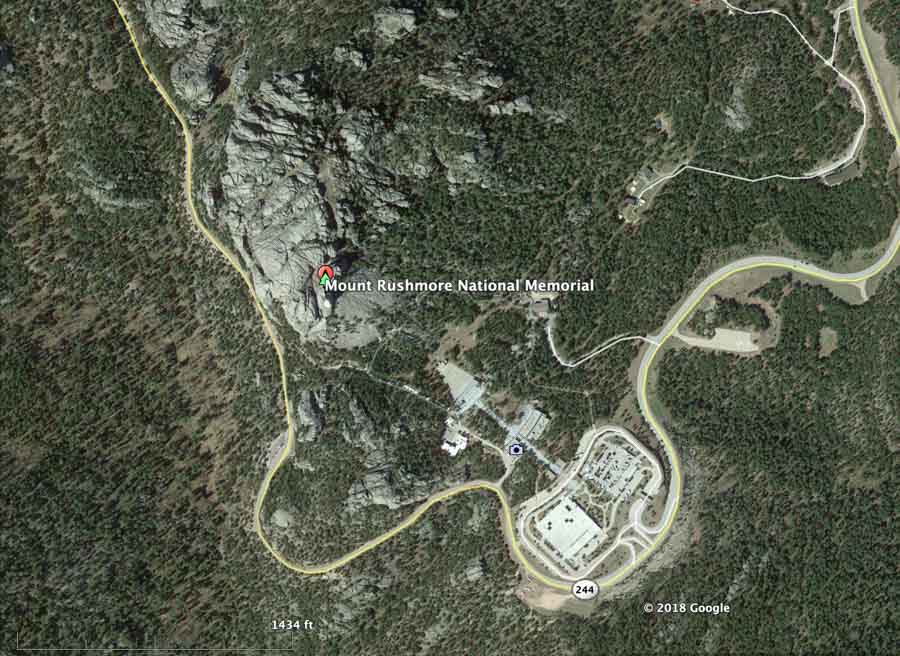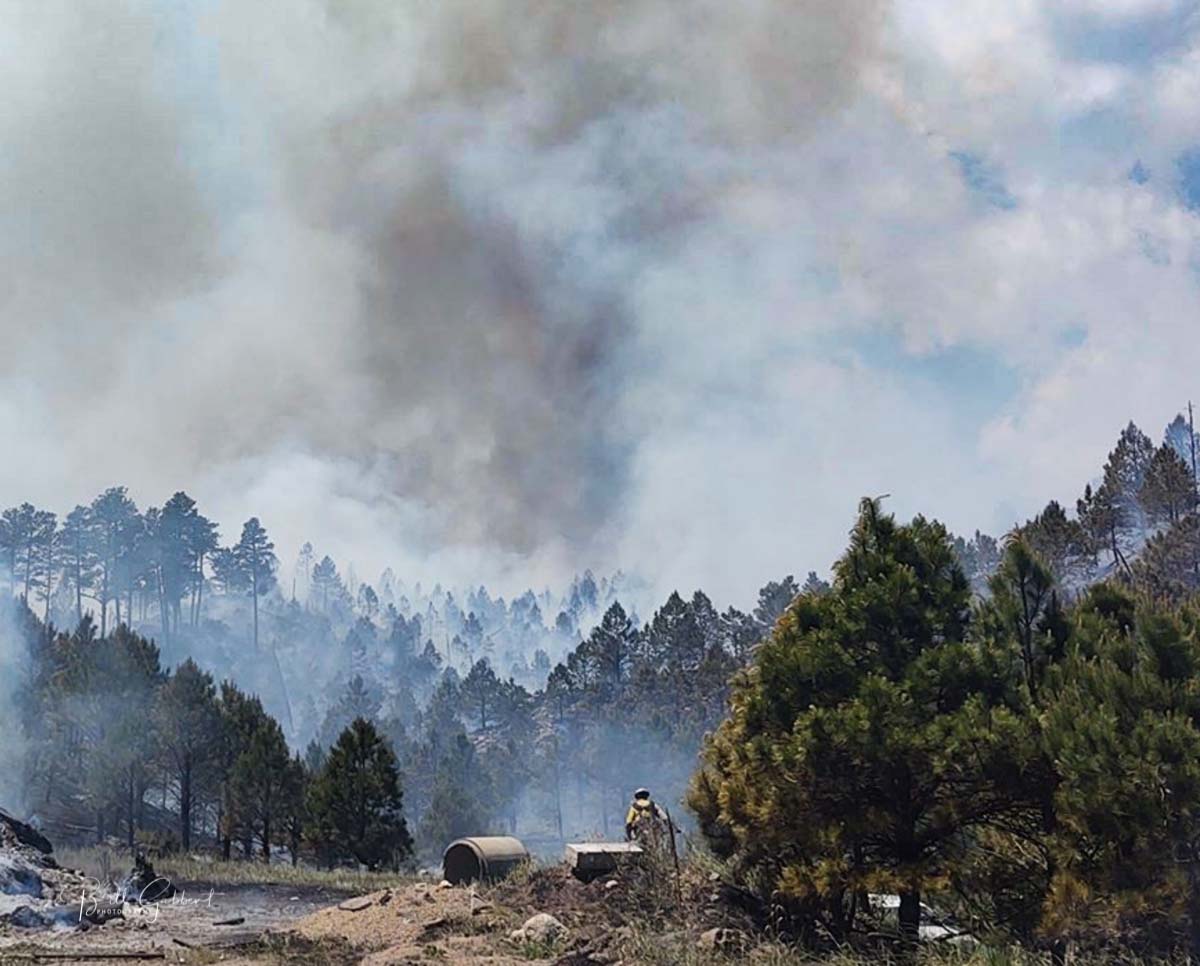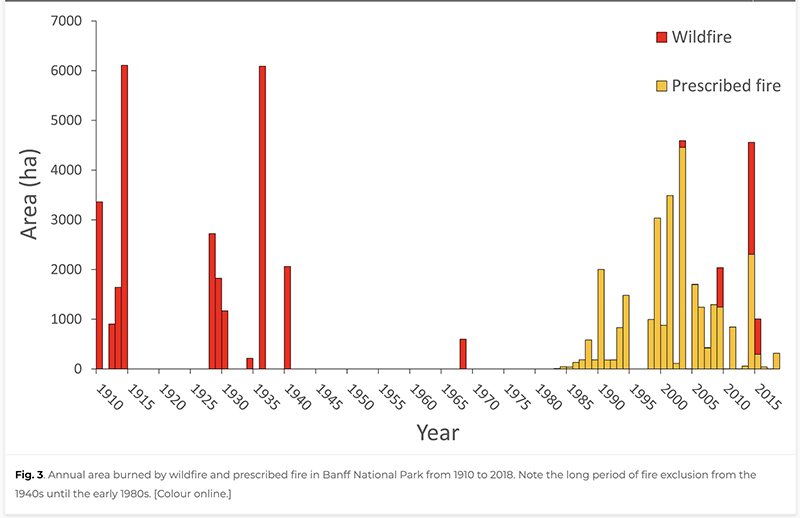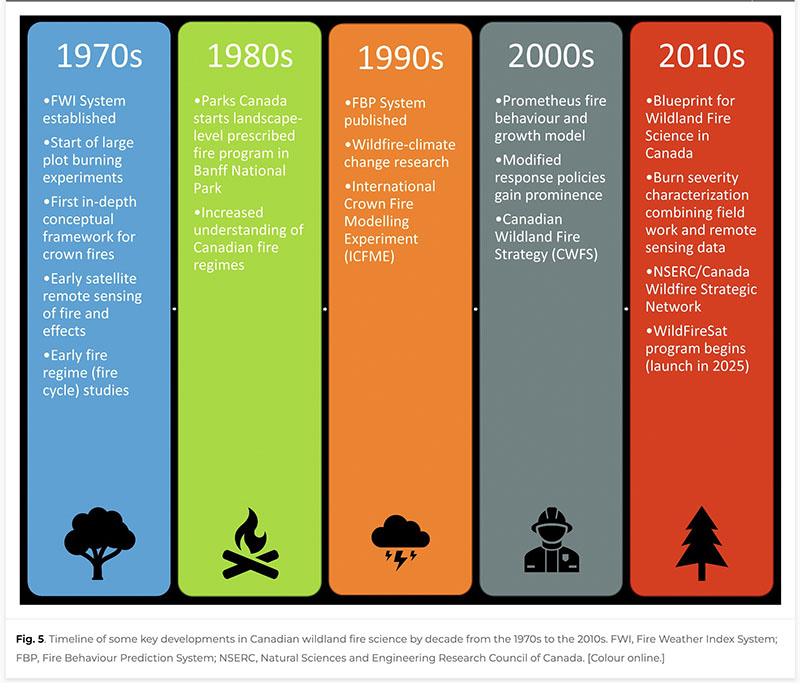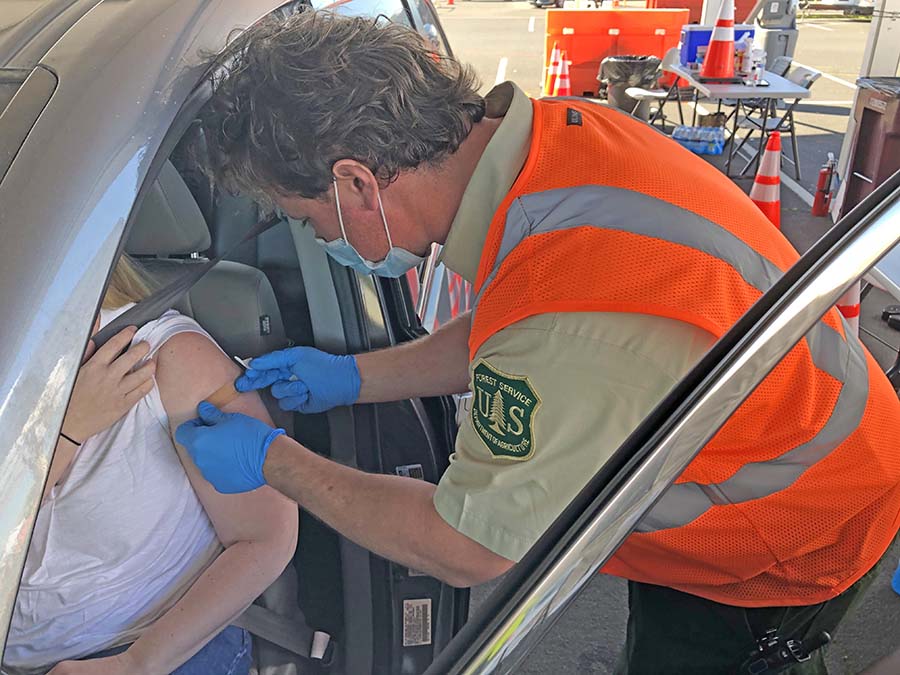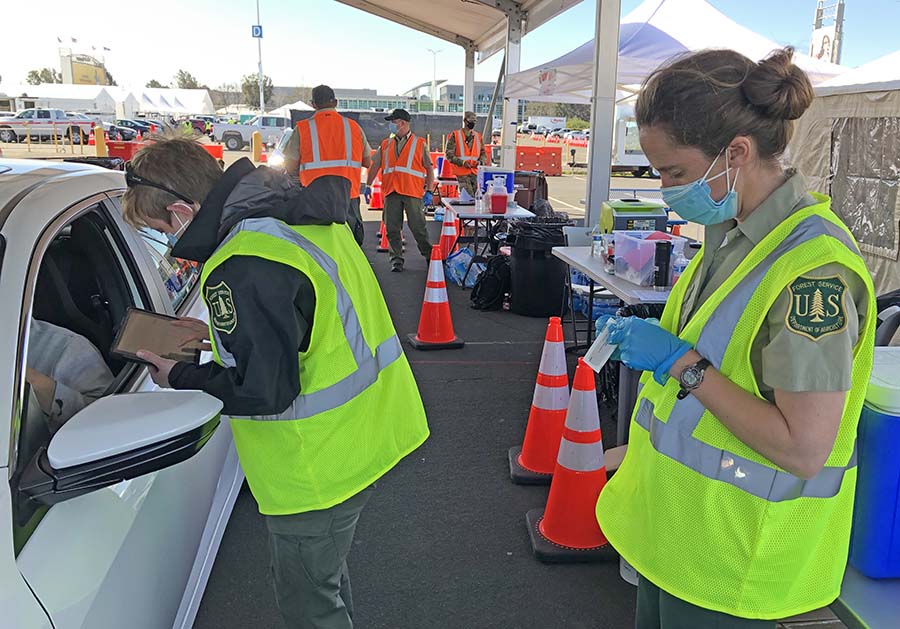
Two Forestry Technicians hired by the U.S. Forest Service to fight wildland fires found out last year that posting criticism of the agency on social media can cause them to lose their jobs. Both of them, one in California and the other in Arizona, wrote about what they perceived as inadequate procedures to mitigate the spread of COVID-19. They were worried about their own health plus co-workers, their families, and the public they came in contact with while on firefighting assignments.
Arizona
While en route to a fire last year, Brian Gold, a GS-5 assistant Captain on a 10-person initial attack fire crew on the Apache-Sitgreaves National Forest in Arizona, was ordered to return to the district office immediately. He was then fired and told to hand over his government licenses, equipment, credit card, and ID. He did not even have time to bring his time and attendance report up to date.
From what Mr. Gold told me, the working conditions on the Apache-Sitgreaves National Forest during the COVID-19 pandemic in Arizona in 2020 were similar to those experienced by Pedro Rios on the Klamath National Forest in Northern California whose story is farther down in this article. On a number of occasions he suggested to his supervisors that there were several specific COVID related improvements that could be implemented to safeguard the health of his crew and others on the District.
He meticulously documented events during the fire season — for example:
“I directly addressed numerous concerns including inconsistency of agency policy between forests and districts, a lack of protocols for our district, the absence of discussion of how to address the subject of Covid-19 with seasonals, concerns that politics and conspiracy theories were dominating informal discussions at our office, and my view that there was a lack of leadership and direction from our line officer and District Ranger, Ed Holloway. I suggested we needed to have a serious conversation about our Covid-19 mitigation and develop a plan of action. We didn’t have thermometers, we didn’t have masks, we didn’t have disinfectant supplies. We couldn’t enforce any type of isolation upon the arrival of new employees. We were really actively discouraged from promoting social distancing.”
Mr. Gold, who worked in multiple states in 2020, said the differences within the U.S. Forest Service in how seriously they take the necessary pandemic precautions is like night and day. Some Forests, he said, are more proactive to maintain a safe working environment, while at other work sites he “was made to feel like I was an outright coward for suggesting there was merit in wearing a mask.”
Last week I talked with another firefighter who had assignments in many western states in 2020 and has firefighter friends who had been on the road for quite a bit of the summer. He had similar observations about how fire business was being conducted in the time of COVID. He prefers to remain anonymous when criticizing the U.S. Forest Service.
“If you happen to be from Montana,” he said, “literally nobody even cared about COVID. And if you were in Washington [state], in particular Region 6, I think there was a relatively high level of awareness of COVID. But I went down to Northern California and had somebody trying to hug me. I’m going, ‘What in the hell are you thinking, man, we’re not doing hugging!’ ”

On March 17, 2020 the National Multi-Agency Coordinating Group (NMAC) assigned three Area Command Teams to work with partners at all levels in the fire community to develop protocols for wildfire response during the pandemic. The teams worked directly with each Geographic Area’s Coordinating Group Chair, dispatch/coordination centers, and local units. Their products for each Geographic Area, titled “Wildland Fire Response Plan COVID-19 Pandemic” were released between April 8 and May 4; the plan for the Southwest (Arizona and New Mexico) was the first and California’s was the last.
On May 5, 2020 District Ranger Edwin Holloway and District Fire Management Officer Justin Thompson arrived unannounced at Mr. Gold’s workplace while he was instructing a unit of a chainsaw refresher class. Ranger Holloway explained that he wanted to talk with Mr. Gold about a Facebook post and one of his emails.
Mr. Gold sent us the text of the Facebook post from his personal Facebook account which included a link to an article on Wildfire Today. He said he added a comment “expressing concern about the interagency wildland fire response in the face of the coronavirus outbreak. Here is the text that was posted May 2, 2020:
“I hope they are able to get some answers…because the silence has been deafening at the field level. From local line officers to Regional and Washington Office staff, the lack of leadership, failure to anticipate challenges, lack of finite protocols, and fundamental inconsistencies between districts and forests is staggering. Guidance and best management practices amount to a pile of shit without any enforcement power. Our forest service leadership needs to start making real decisions that will protect the health and wellbeing of our fire service staff. I hear a lot of lip service about hiring and retention issues within the agency. This is already a high risk job with variable pay, questionable benefits, a difficult and cumbersome HR and Workers Compensation infrastructure, and a difficult to sustain lifestyle. If the agency is truly interested in hanging on to us and continuing to fulfill its critical mission to the American public, it needs to start leading from the front. If not there are going to be a lot more dead firefighters this summer and many more Forestry Technicians wondering if this the right agency or career field for them.”
Below is a screenshot of the top portion of the referenced Wildfire Today article:

From Mr. Gold’s notes about the meeting on May 5, 2020:
“[Ranger Holloway] repeated that he was worried my ‘head was in the clouds’ about coronavirus. He stated that one of his intentions in visiting me today was asking me to ‘prove’ to him that I was competent to lead the crew during this fire season. He said he wanted to make sure that I was not going to be so distracted by coronavirus that “someone doesn’t get burned up or hit by a tree. I stated I did not wish for this conversation to be political and raised the concern that there had been a lot of political discussion in our office regarding the federal coronavirus response. I stated this was unproductive and we should be focused on the health of our employees and the community. I asked why our district had waited to tell at risk non-essential employees to work from home, why we were not wearing face masks when we were operating in non-operational settings, and why we were not social distancing. I also asked why there was so much inconsistency between how Forest Service offices were managing their coronavirus response and why there was so much inconsistency in interpretation of guidance. Ed repeated that I had a mission critical role and expressed concern that my head was ‘in the clouds’ about this ‘coronavirus thing.’ He said maybe next year there will be ’11 or 15 fire orders’ about Coronavirus but ‘we’ve only known about this since mid-March, only six weeks’ and everyone is working on it right now. What I was told was that ‘higher ups’ had seen my facebook post and it had gained attention. At one point it was stated that this has caught the attention of people at the region.”
Mr. Gold said the District Ranger and the Fire Management Officer were much more concerned about the comment he wrote on the Facebook post than the inclusion of the Wildfire Today article. He said he deleted the Facebook post soon after the May 5 meeting.
The email referenced by Ranger Holloway was sent April 26 by Mr. Gold.
“While at work at the Clifton Ranger District Office,” Mr. Gold said, “I authored an email to district staff talking about [my crew’s] best management practices during the Coronavirus pandemic. I sent this email to staff members that routinely interact with our fire crew.”
On May 8, three days after that meeting, he was told to turn around while en route to a fire and at the District Office was given a termination letter, that read in part:
“This letter is to notify you are being terminate [sic] from your Career Conditional appointment and from Federal Service…
“As a public servant you are held to a high standard and your actions are to be above reproach. Your misconduct is unbecoming of a federal employee and has reflected negatively on the Forest Service.”
The termination was effective at the close of business that day, about one day before his probationary period ended, Mr. Gold said. During federal civil service career conditional employees’ one-year probationary period, it is relatively easy to be fired. After that, it becomes much more complex and a series actions, rules, and procedures must be followed.
Fairly soon after the termination, Mr. Gold worked as an Administratively Determined (AD) employee, then got hired again by the U.S. Forest Service in a career conditional fire position in another state.
Northern California
After 12 years as a wildland firefighter Pedro Rios acquired quite a bit of fire experience. He had worked on a contractor’s hand crew for six years, after which he spent another six years working on a hand crew and engines with the USFS on three National Forests — Lassen, Plumas, and finally on the Klamath.
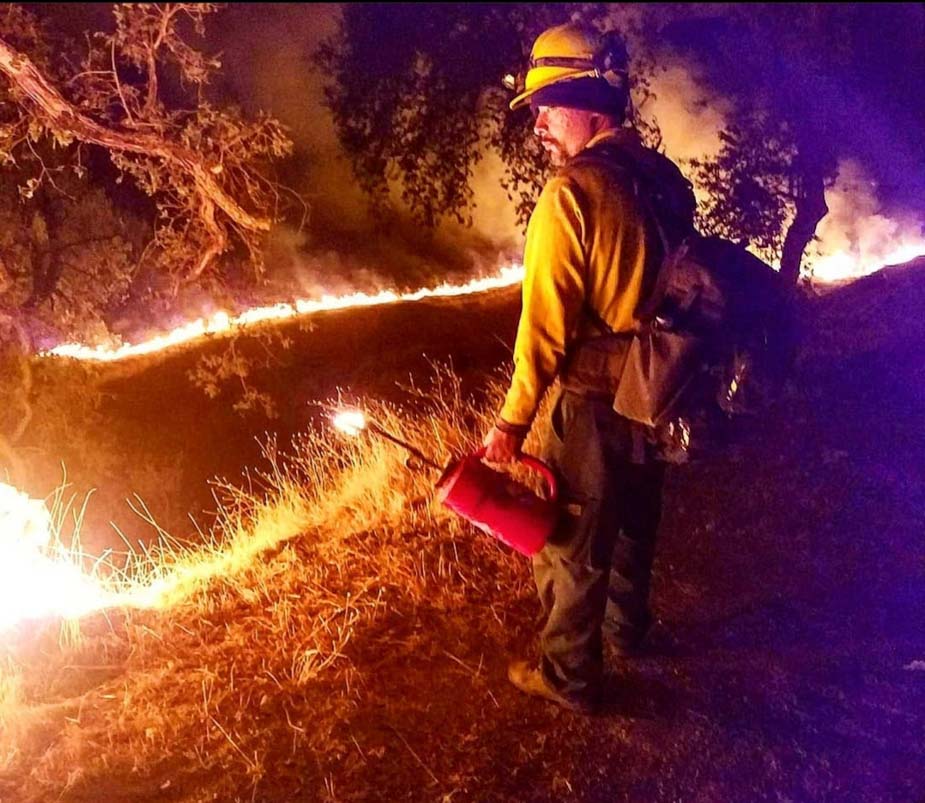
It can be difficult for a seasonal or temporary employee with no benefits like Mr. Rios to get into a permanent position where he and his family could get health insurance and access to a retirement program. He was a GS-4 but was qualified as a Type 5 Incident Commander able to take command of small fires.
When his Northern California crew was sent to Southern California to augment the forces there during a busy part of the fire season he had concerns about some of the procedures put in place by the fire staff on the Klamath. They did not quarantine before or after traveling. After they were told to return from what was considered a “hot zone”, and being on standby at a fire station on the Cleveland National Forest where employees had tested positive for COVID days or weeks before their arrival, they were told that instead of quarantining for a week or more, they were supposed to “self-isolate” if they experienced symptoms after return.
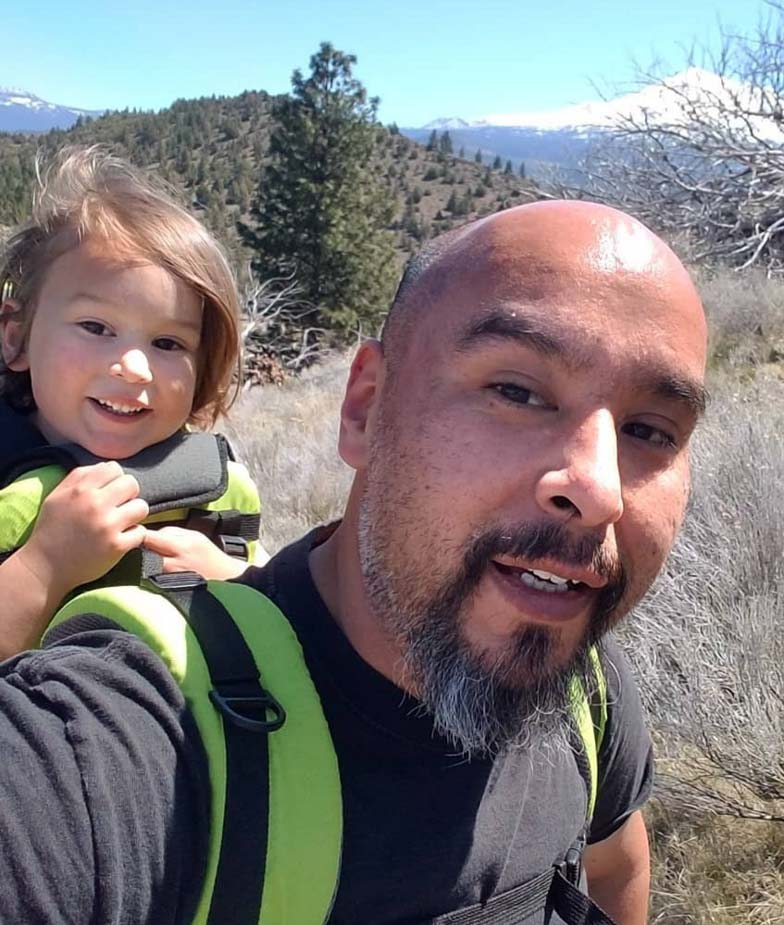
Mr. Rios at that point thought of his son who in 2019 was life flighted to Children’s Hospital in Davis, California and kept for 2 days for labored breathing due to severe asthma. His fiancée also has asthma, but not to the same degree.
Worried about the impact his crew returning without quarantining would have on his home town and his family, on July 8, 2020 he wrote a post on the Siskiyou Coronavirus Community Response Facebook page. He included a screenshot of the top management positions on the Klamath NF.
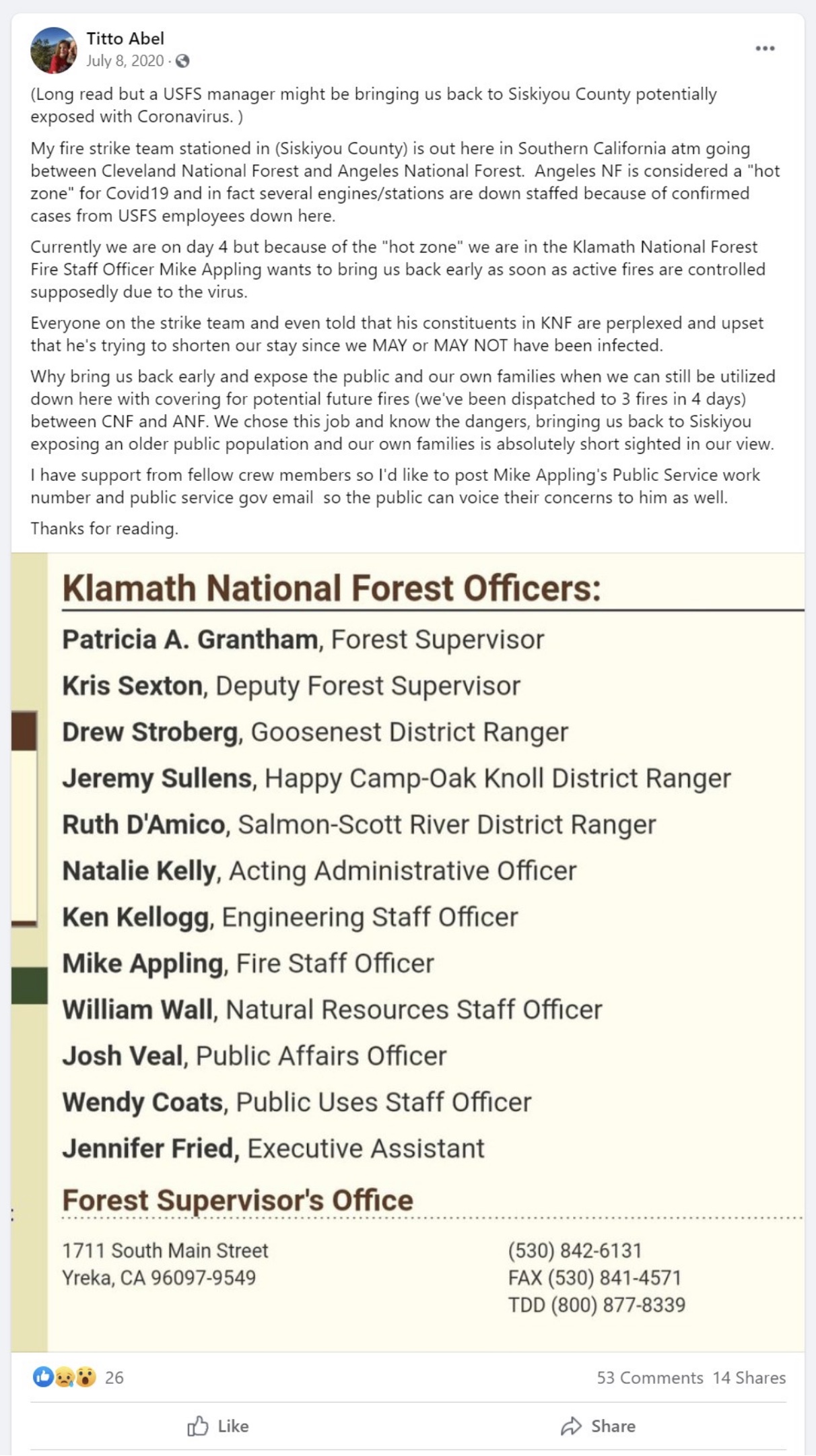
In the post, after explaining that the plan was for the personnel to return without a quarantine, he name-checked the Fire Staff Officer on his home forest, “so the public can voice their concerns to him as well.”
On July 14, 2020 District Ranger Drew Stroberg sent Mr. Rios an email regarding the Facebook post, saying he needed to go through the chain of command, rather than directly to the public. “I have determined that you have not broken any written rules and certainly don’t mind you bringing your concerns forward, however the way you chose to do this (via social media) and the tone you used in your social media post was unprofessional and showed a lack of integrity.” And, “I have to let you know that a future failure to meet these expectations may result in disciplinary action.”
After the fire season was over, on December 1 District Ranger Stroberg left a voice mail message for Mr. Rios, saying “We are not exercising, uh, rehire eligibility next year so I’m hoping that you will reapply for your position.”
He did reapply, but as of March 20, 2020 the signs are that the Klamath NF is not going to bring him back to his former job.
“I am being denied rehire rights and blacklisted,” Mr. Rios said. “I have only seen two people denied rehire rights and both were either people who received bad work appraisals for not following orders, were on their phone too much while on a fire, or for drinking in barracks. I only have great work appraisals.”
Mr. Rios filed a complaint with the U.S. Equal Employment Opportunity Commission, stating that he was “discriminated and retaliated against due to protesting lack of COVID-19 protocols and protections for the fire crew, families and the public.”
He also filed a whistleblower complaint with the U.S. Office of Special Counsel alleging that his free speech rights as a public employee were violated.
For the coming fire season Mr. Rios has found a supervisory firefighting job outside of California.
A statement from the U.S. Forest Service
I asked the USFS if considering the “Wildland Fire Response Plans (COVID-19 Pandemic)” that were written for each Geographic Area, does each Forest develop their own plans and procedures about how they will manage mitigations for the COVID-19 issue? The response was from Stanton Florea, Fire Communications Specialist who works for the agency’s Washington, DC office.
The USDA Forest Service is committed protecting all of our employees and communities during the COVID-19 pandemic. Preventing the spread of COVID-19 is still our priority among our first responders and communities we serve. The 2020 Fire Year provided many learning opportunities. We’ll continue to employ those successful practices in our firefighting plans for 2021.
The Wildland Fire Response Plans provide broad interagency guidance for wildfire personnel/leadership given the context of COVID-19. The plans provide protocols and best management practices and identify screening and support resources for the prevention of, and response to, COVID-19 illness. The specifics of implementing these plans is left to local units, as circumstances vary when local needs and directives vary from national guidance. For example, where testing resources can be accessed locally, or if vacant government housing is available for quarantine/isolation purposes.
When asked for the agency’s comments about the two firefighters who lost their jobs after posting on Facebook, Mr. Florea said:
We do not comment on personnel matters.

